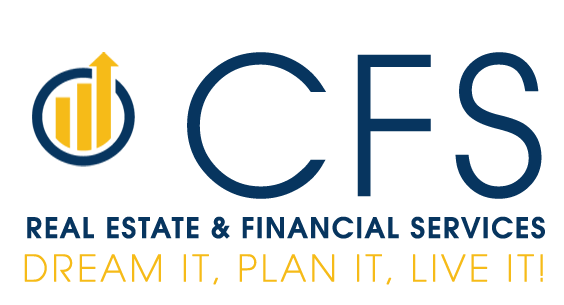In the context of the constant changes in the business environment, access to finance can be a critical factor in the development and viability of a business. Conventional financing, however, may not be possible for every business to attain. Some business entities are deemed high-risk because of one reason or another, including bad credit, new business, and volatile industries. High-risk business loans are a source of hope for these businesses, as they provide the needed capital when all other options are denied. This detailed reference covers the definition of high-risk business loans, their categories, advantages and disadvantages, and strategies for businesses to operate in this high-risk area yet with high returns.
Understanding High-Risk Business Loans
High-risk business loans are for business individuals who cannot qualify for conventional business loans because of reasons such as low credit rating, fluctuating cash flow, or operating in restricted sectors. These loans are often referred to as ‘sub-prime’ or high risk by the lenders since there is a higher likelihood of default than in the case of normal loans.
High-risk businesses usually have bad or no credit history, low revenues, are engaged in industries such as gambling, adult entertainment, and cannabis industries, or are newly established businesses. Because of this, there are higher perceived risks, and lenders tend to set higher standards and interest rates to cover their losses.
At CFS Real Estate & Financial Services, we specialize in high-risk business loans tailored to your unique needs. Don’t let financial constraints hold your business back. Contact us now to discover how we can help you secure the capital you need for growth and success.
There are several types of high-risk business loans:
Different categories of high-risk business loans are available to meet various requirements and situations.
- A merchant cash advance (MCA) is when a business gets a lump sum in exchange for a percentage of the credit card sales. This option is best suited for companies that process large volumes of credit card transactions since the fees are high and the repayment terms are short.
- Working capital, which is borrowed and is usually repaid within the period of a few months to one year, is cheaper than other short-term funding sources but more expensive than traditional sources of credit.
- Invoice financing enables companies to use their outstanding invoices to secure a loan, which makes the product suitable for companies with long payment terms but credible invoicing. The lender gives an amount of money that is a percentage of the total invoice amount, which provides the business with immediate access to cash.
- Equipment financing is used to support high-risk enterprises to acquire essential machinery or equipment, where the purchased equipment can be used as security.
- Another option is personal loans for businesses, but with this, the owner’s credit is linked to the success or failure of the business, thus exposing the owner to more risk.
The Advantages and Disadvantages of High-Risk Business Loans
Advantages
Like all types of loans, high-risk business loans have their benefits and drawbacks. The first benefit is that it is easier to access cash in the market than it is to access capital through other methods. Such loans are issued quickly, so they help borrowers solve their problems and get money as soon as possible. They also provide convenience because the funds can be utilized for any need, such as working capital, stock, or even to grow the business. High-risk loans can be of great benefit to start-ups or companies in small or specific markets as they offer the necessary capital for the industry to expand.
Disadvantages
But at the same time, certain disadvantages must be taken into consideration as well. As a result, lenders set higher interest rates on them to compensate for the risk, meaning that borrowers end up paying a significant amount of money in the long run. High-risk loans are usually repaid through a strict schedule of repayments, which can be a challenge for any business, especially one that is not stable in terms of income generation. The cost and the terms of repayment affect the business in a way that they end up in more debt, and it becomes very difficult for the business to find a way out of the debt cycle.
Struggling to find the right lender for your high-risk business? CFS Real Estate & Financial Services offers expert guidance and tailored loan solutions to meet your financial needs. Get in touch with us today to learn more about our high-risk business loan options and start your journey to financial stability.
That is how a high-risk business loan can be obtained:
High-risk business loans are not granted easily, and the following are some of the key steps that must be followed when applying for a loan. A good credit score is very important; every point counts, and every moment can make the difference between being approved or rejected. This may require clearing any outstanding balances, disputing credit report mistakes, and avoiding the acquisition of new credit before applying. Documentation is also very important as one needs to prepare for the worst. Lenders will seek to be provided with balance sheets, revenue and profit and loss projections, tax returns, bank statements, and other financial documents. It is essential to ensure that all documents are updated and contain the most recent and accurate information regarding the economic condition of your business. The third important factor is the ability to prove the business viability. Make sure you prove to potential lenders that the company has a clear and viable plan to make money. This could include consistent revenue generation, a customer base, and a niche that puts you in a vantage position in your industry. Using collateral is also very beneficial when considering a loan because it takes away the risk of the loan from the lender and can lead to better loan terms. It is also very important to do research and make the right choice of the right lender. Not all lenders are the same, and it is vital to narrow down the search to those providing high-risk loans and then compare the offers based on the terms, interest rates, and reviews.
Risk Factors Related to High-Risk Business Loans
High-risk business loans are good for financing but they have their risks involved. This is because the interest rates and charges for debts are higher than the normal prices, and this can accumulate to form a big amount of money that cannot be easily paid. Defaulting on the loan will also affect the credit score, making it even more challenging to secure financing in the future. The repayment terms are very rigorous, and the costs are high, which leads to cash flow problems that are detrimental to the financial position of your business.
At CFS Real Estate & Financial Services, we understand the challenges of securing financing for high-risk businesses. Our team is here to help you navigate the process and find the best loan options available. Contact us now to get started on your loan application and secure the funding your business needs.
Finding the Right Lender
Selecting the right lender can be very important, especially when it comes to high-risk business loans. One should take it upon themselves and search for lenders who have experience in offering high-risk loans. Some of the things that one should do are: reading the reviews of the company, checking its reputation, and knowing its terms. It is recommended to compare offers from different lenders to be able to obtain the most advantageous terms. The interest rate, fees, and the rate of repayment also differ and thus should be determined in a way that favors the borrower. It is also important to consult other business people or financial planners when searching for the best lenders.
Choosing the right lender for a high-risk business loan can be daunting. Let CFS Real Estate & Financial Services simplify the process for you. Reach out to us today for personalized advice and access to reputable lenders who specialize in high-risk loans.
Possible substitutes for high-risk business financing
If high-risk loans seem too risky, then it is important to consider other forms of financing. Crowdfunding is a way that involves obtaining funds from numerous individuals through online sources such as Kickstarter and Indiegogo for businesses. This option can be especially useful for companies that have interesting stories behind them or unique offerings. Another form of funding is venture capital, which is suitable for high-growth companies with high potential returns. Venture capital is a large sum of money that is invested in a business in return for an ownership interest. However, sometimes the business owners lose some control of their business. Another source of funding is Business grants, which should also be considered. There are many forms of financing for the government and other private sources that are available only for certain forms of businesses. These do not need to be repaid but may be offered at a relatively similar rate.
Conclusion
High-risk business loans offer a crucial lifeline for businesses unable to secure traditional financing. While they come with higher costs and risks, they also provide opportunities for growth and sustainability. Businesses must carefully weigh the pros and cons, prepare thoroughly, and choose the right lender to navigate the high-risk loan landscape successfully. As with any financial decision, due diligence and strategic planning are key to leveraging high-risk business loans for positive outcomes.
By understanding the nature of high-risk business loans, exploring various types and their respective pros and cons, and preparing adequately to qualify, businesses can make informed decisions that support their financial health and long-term success. Additionally, considering alternative financing options can provide a broader perspective and potentially more favorable terms, helping businesses achieve their goals while managing risk effectively.

